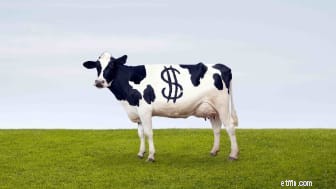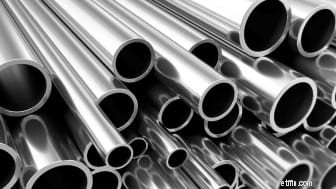
Börshandlade fonder (ETF) investerar schweiziska armékniven. Du kan göra nästan vad som helst med dem:bygga en portföljkärna, bli taktisk i försvaret, ta en moonshot eller till och med göra vinst när marknaden faller. Och vi hade alla dessa mål och mer i åtanke när vi byggde upp vår lista över de 22 bästa ETF:erna att köpa för 2022.
Hallå. Om 2020 och 2021 har lärt oss någonting så är det att vi måste vara förberedda.
För att vara tydlig:De bästa ETF:erna för 2022, precis som i varje föregående års lista, inkluderar optimistiska fonder som är utformade för att dra fördel av de olika trender Wall Streets analytiker och strateger ser utspela sig under det kommande året. Det gäller både aktier, obligationer och råvaror.
Men även om du och jag kan tillskriva godtyckliga kalenderdatum som 1 januari och 31 december en viss betydelse, så gör marknaderna det definitivt inte. Det är därför vi också vanligtvis inkluderar några gå-var som helst fonder som skulle vara lika lämpliga 2022 som de skulle vara 2012 eller 2032. Vi försöker också förse investerare med ett par brandsläckare – defensiva alternativ som du kanske bara utnyttjar när stormmoln faller över Wall Street.
Så, vad säger kristallkulan om 2022? En mängd strateger förutspår blygsamma vinster i de höga ensiffrorna:Goldman Sachs säger att S&P 500 kommer att nå 5 100. RBC säger 5 050, liksom LPL Financial i mitten av deras sortiment – och Kiplingers privatekonomi Executive Editor Anne Kates Smith håller med dem. "Tänk någonstans lite över 5 050 för S&P 500, eller norr om 39 000 för Dow Jones Industrial Average", säger hon i vår 2022-utsikt. (S&P 500 ligger för närvarande på 4 649.)
Wall Street är dock inte enhälligt hausse. BofA kräver en liten nedgång till 4 600 till slutet av 2022, medan Morgan Stanley tror att vi kommer att vara hela 5 % lägre, på 4 400.
Och naturligtvis förväntar sig ingen att resultatet kommer i en rak linje, och de förväntar sig inte heller att varje sektor ska bidra till dessa vinster eller förluster jämnt. Värde- och cykliska sektorer är populära uppmaningar än en gång för 2022, även om analytiker är lite skumma att omicron-covid-varianten kommer att fungera som ytterligare ett hinder i återhämtningen.
Här är de 22 bästa ETF:erna att köpa för 2022 . Om det verkar som ett hagelgevär av ett urval, är det med avsikt. Investerare kanske jagar ett brett spektrum av mål under det kommande året – var och en av dessa ETF-val representerar ett utmärkt sätt att uppnå dem. Viktigt är att detta inte är ett förslag om att bygga en portfölj med alla 22 val, men vi tror att det finns åtminstone ett par fonder för varje typ av investerare. Så läs vidare och upptäck vilka välbyggda ETF:er som bäst matchar det du försöker åstadkomma 2022.
Data är från den 21 december. Utdelningsavkastningen representerar den efterföljande 12-månadersavkastningen, vilket är ett standardmått för aktiefonder.

Vi börjar titta på 2022 års bästa ETF:er med en fond som de flesta läsare förmodligen är väl medvetna om:Vanguard S&P 500 ETF (VOO, $425,69). Och du kan satsa din bottendollar på att vi kommer att leda med en S&P 500-spårande indexfond i varje årlig lista inom överskådlig framtid.
När allt kommer omkring kan deras kamrater helt enkelt inte hänga med.
Varje år håller vi ögonen på S&P Dow Jones Indices årsrapport om aktivt förvaltade fonder, även om den lyder som ett brutet rekord. Från den senaste rapporten i april, en sammanfattning av 2020:
"[Aktivt förvaltade] storbolagsfonder tog fart där de slutade det föregående decenniet – för 11:e ettårsperioden i rad presterade majoriteten (60 %) sämre än S&P 500."
Om det här vore collegefotboll, skulle vi ifrågasätta om detta ens är en rivalitet längre.
Men tänk på det:Under 11 år i rad kan majoriteten av erfarna proffs – experter som får betalt och bra betalt för att välja aktier åt sina kunder – som slänger blandningsprodukter med stora bolag inte slå riktmärket. Så, exakt, vilken chans tror du att din genomsnittliga investerare, som kanske har en timme varje vecka att ägna åt att se över sin portfölj, har att springa ifrån indexet?
Dessutom slår S&P 500-indexfonder till och med ut andra stora indexstrategier. Med bara ett par veckor kvar till 2021 överträffade VOO 80 % av sina klasskamrater i Morningstar-kategorin och hade tjänat hela fem av fem stjärnor från Morningstars betygssystem.
När det gäller själva produkten:Vanguard S&P 500 ETF exponerar dig för de 500 företag med huvudsakligen USA-huvudkontor som handlar på stora amerikanska börser. När någon säger "marknaden" menar de vanligtvis S&P 500.
Kom bara ihåg:Det här är inte en perfekt balanserad fond som ger dig lika stor exponering mot var och en av marknadens 11 sektorer. För närvarande är teknologiaktier toppar med nästan 30 % av fondens tillgångar. jämför det med verktyg, fastigheter, material och energi, som var och en står för mindre än 3 %. Det är också värt att notera att S&P 500 utvecklas med den amerikanska ekonomin – under de sena åren var energi och teknik lika, per inflytande på indexet.
Och eftersom S&P 500 är börsvärdesvikt, betyder större företag också mer för dess resultat. Enbart Apple (AAPL) och Microsoft (MSFT) står för 13 % av VOO:s tillgångar. De 50 lägsta innehaven står för bara mer än 1 %. Det betyder att du löper en viss risk om investerare "roterar" ut ur tungt viktade framstående som Apple, Microsoft, Amazon.com (AMZN) eller Tesla (TSLA).
Även med dessa risker har dock investerare länge gjort bra ifrån sig genom att investera i indexet – och med 0,03 % i årliga utgifter finns det inget billigare sätt att gå tillväga. Det är därför VOO tillhör våra 22 bästa ETF:er att köpa för 2022.
Läs mer om VOO på Vanguard-leverantörens webbplats.

En annan "rivalitet" som har varit ganska skev i mer än ett decennium har varit tillväxtens dominans över värde – inklusive vad som verkar vara ytterligare en vinst för tillväxt 2021. Men för andra året i rad kräver ett stort antal strateger en renässans i underprissatta aktier.
"Tidigare under 2021 började aktier i företag knutna till den ekonomiska cykeln – i stora drag kategoriserade som värdeaktier – att överträffa tillväxtaktier, som dominerade under pandemin när efterfrågan på teknik skjutit i höjden. Den handeln vände efter att Delta-varianten satte återhämtningen i tvivel." säger Matt Peron, forskningschef på Janus Henderson. "Men om BNP fortsätter att expandera som vi förväntar oss 2022 (trots kortsiktiga bakslag) och räntorna blir allt högre, kan värdeorienterade sektorer som finans, industri, material och energi återigen ta täten."
Det är därför vi, bland en mängd fonder som faktiskt märker sig själva som "värde" fonder, har valt Vanguard High Dividend Yield ETF (VYM, 109,20 USD) för att representera värde med stora bolag bland våra bästa ETF:er för 2022.
Vanguards VYM har ett ganska enkelt mål:Investera i företag som har en avkastning över genomsnittet. Och den lever upp till sitt namn och erbjuder en aktuell avkastning på 2,8 %, vilket är mer än dubbelt så mycket som S&P 500 för närvarande.
Men genom att göra det har Vanguard High Dividend Yield ETF också en exponering som är högre än kategorigenomsnittet mot tre av de tidigare nämnda värdesektorerna som går in i 2022:finansiella tjänster (23 %), energi (8 %) och material (4 %). Den fjärde – industrier, med 10 % av tillgångarna – ligger bara två procentenheter under kategorinormen.
Peron tillägger att under perioder av åtstramande penningpolitik, som vad som förväntas av Federal Reserve i år, "blir investerare ofta värderingskänsliga, vilket kan driva upp attraktionskraften för värdeaktier på kort sikt." Det skulle också vara goda nyheter för VYM:s portfölj, som är billigare än sina jämförbara konkurrenter både vad gäller pris-till-vinst (P/E) och pris-till-kassaflödesmätningar.
Läs mer om VYM på Vanguard-leverantörens webbplats.

Medan våra bästa ETF:er för 2022 ser väldigt annorlunda ut än 2021 års utgåva, finns det några få utvalda fonder kvar – och ingen fond har haft mer uthållighet på vår årliga lista än Distillate U.S. Fundamental Stability &Value ETF (DSTL, 44,75 USD).
Det beror delvis på att DSTL gör saker annorlunda. Och även för att det ger resultat.
Många värde-ETF:er förlitar sig på mätvärden som P/E, pris-till-försäljning (P/S) och pris-till-bok (P/B) för att avgöra vad som ser underprissatt ut. Men Distillates fond fokuserar på fritt kassaflöde (FCF, den kontanta vinsten som blir över efter att ett företag har gjort några investeringar som krävs för att upprätthålla verksamheten) dividerat med företagsvärde (EV, ett annat sätt att mäta ett företags storlek som börjar med börsvärde, sedan faktorer i skulder och kontanter till hands).
Thomas Cole, VD och medgrundare av Distillate Capital, förklarar att fonden tittar på FCF/EV eftersom företag kan "justera" vissa siffror, såsom vinster och intäkter (vilket i sin tur kan röra till värderingsstatistik baserat på dessa siffror) , "du kan inte fejka kontanter."
Destillate U.S. Fundamental Stability &Value ETF börjar med 500 av de största amerikanska företagen, och renar sedan bort de som är dyra baserat på dess definition av värde, såväl som de med hög skuldsättning och/eller volatila kassaflöden. Resultatet är en portfölj som inte ser mycket ut som en traditionell värdefond – medan industrier är stora med 22% av innehaven, är DSTL också tungt inom hälsovård (23%), teknologi (21%) och konsumentcykliska (14%) namn . Heck, Morningstar ser inte ens Distillates ETF som en fond med stort värde, utan en stor blandningsfond istället.
Coles inställning till värde får honom också att se den nuvarande marknaden mycket annorlunda än de flesta av oss.
"Vår övergripande observation är att marknaden inte är så lömskt dyr på basis av det fria kassaflödet den genererar än om du vilade dina slutsatser på mått som P/E och P/B", säger han.
Prestanda ser fruktansvärt rosa ut genom Coles linser också. DSTL är på god väg att överträffa de flesta av sina jämlikar under 2021. Och sedan starten den 23 oktober 2018 har fonden inte bara överträffat de tre ETF:erna med högst tillgångsvärde med i genomsnitt 41 procentenheter – den har slagit ut S&P 500 med en solid 10 poäng för att starta.
Läs mer om DSTL på Destillate Capital-leverantörens webbplats.

Investerare skulle också göra klokt i att utöka sin fyndjakt långt utanför gränserna för stora aktier. För många Wall Street-prognostiker är mindre företag mycket mer tilltalande.
"Medan stora och medelstora bolag handlas till en premie på 35–40 % till historien, handlas små bolag nu i linje med historien", säger Jill Carey Hall, aktie- och kvantstrateg för BofA Securities. "Förutom att de är billigast, är de också en bättre diversifierare. ... Även om tillgångsklassens avkastning har ökat mer korrelerad jämfört med för 20 år sedan, är Russell 2000 mindre korrelerad med andra tillgångsklassers avkastning i genomsnitt än Russell MidCap eller S&P 500 både under de senaste tre åren och de senaste decennierna."
Våra bästa ETF:er att köpa för 2022 inkluderar två sätt att attackera småbolagsvärden. Först ut:Pacer US Small Cap Cash Cows 100 ETF (KALV, 42,34 USD).
Pacers CALF ser på värdet på ungefär samma sätt som Destillates DSTL gör, med FCF/EV – eller "fritt kassaflödesavkastning" – som sitt föredragna mått. Närmare bestämt väljer CALF ut de 100 bästa S&P SmallCap 600-aktierna efter fritt kassaflödesavkastning, viktar dem sedan med måtten och balanserar om portföljen varje kvartal. För balans är innehavet begränsat till en vikt på 2 % vid varje ombalansering.
Återigen, Pacer US Small Cap Cash Cows 100:s nuvarande innehav är inte vad du kan förvänta dig av en värdefond. Mest slående:Nästan hälften av ETF:s vikt finns i konsumentaktier; industrier är den enda andra tvåsiffriga vikten på 13%.
Det är svårt att hitta många ETF:er som är lika älskade av fondbedömare som CALF. Pacers fond får för närvarande hela fem stjärnor från Morningstar, och det oberoende analysföretaget CFRA listar fonden bland de högst rankade ETF:erna för småbolag som den täcker.
Läs mer om CALF på Pacer ETFs leverantörswebbplats.

Ett annat CFRA-förslag för att skala småbolagsvärdet orange är Roundhill Acquirers Deep Value ETF (DEEP, $35,81), och det finns inget subtilt med den här.
DEEP riktar sig mot "djupt undervärderade små- och mikrokapitalaktier." Det görs med hjälp av "The Acquirers Multiple" – ett värderingsmått publicerat 2014 av Tobias Carlisle, grundare och verkställande direktör för Acquirers Funds. Acquirer's Multiple fokuserar också på företagsvärde, men istället för FCF dividerar den med rörelseresultatet.
Säger webbplatsen dedikerad till denna multipel:
"Att beräkna rörelseresultatet uppifrån och ned standardiserar måttet, gör en jämförelse mellan företag, branscher och sektorer möjlig, och genom att utesluta speciella poster – intäkter som ett företag inte förväntar sig ska återkomma under kommande år – säkerställs att dessa intäkter endast är relaterade till verksamheten."
Portföljen med 100 aktier i genomsnitt är knappt 1 miljard dollar i börsvärde. Enligt Morningstar är 79 % av fonden i aktier med mikrobolag, 20 % i små bolag och resterande 1 % i mellanbolag. Och varje innehav får lika mycket att säga till om i prestanda, eftersom de är satta till 1 % vikt per styck vid varje kvartalsvis ombalansering. Toppinnehav på väg in i 2022 inkluderar processautomationsspecialisten Hollysys Automation Technologies (HOLI) och leverantören av skyddskläder Lakeland Industries (LAKE).
Sektorviktningarna är lite mer skeva. Portföljen domineras av finans (30 %), konsumtion (24 %) och industri (22 %). Det gör att mindre än en fjärdedel av resten av fonden ska delas upp på sju andra sektorer.
Föga överraskande kan detta aggressiva tillvägagångssätt gå åt sidan; Roundhills fond trampades av både breda småbolags- och värdeindex under 2019 och 2020, till exempel. Men det har överträffat i varierande grad under hela 2021.
Observera bara att DEEP inte är billigt. Dess 0,80 % i årliga utgifter är långt över normen för din genomsnittliga indexfond.
Läs mer om DEEP på Roundhill-leverantörens webbplats.

En nästan universell eftergift är att företagsamerika kommer att ha mycket svårare att hitta tillväxt 2022 jämfört med 2021, till stor del eftersom jämförelser mellan år och år inte kommer att vara lika lätta.
Det betyder att investerare kommer att behöva vara mer selektiva, och för många strateger lägger det en ökad vikt vid "kvalitetsfaktorn".
"Under tidigare cykler när avkastningskurvan har plattats ut, har effekterna på aktier sett investerare leta efter kvalitetsbolag som skulle kunna överleva alla förestående räntechocker", säger William Davies, biträdande global investeringschef på Columbia Threadneedle Investments, som noterar att för honom, kvalitet inkluderar solida balansräkningar och starka konkurrensfördelar. "När vi går in i 2022 har vi sett avkastningskurvan brantna, plattas ut och stiga över kurvan igen, och det har lett till ett mer blandat scenario när det gäller vad som leder marknaden. … Företagen vi gillar – kvalitetsföretag med solida balansräkningar och konkurrensfördelar – har en bättre chans att klara av volatilitet."
iShares MSCI USA Quality Factor ETF (QUAL, $141,72) är en av de största ETF:erna fokuserade på kvalitetsfaktorn. QUAL har för närvarande en uppdelning på ungefär 75/25 av aktier med stora och medelstora bolag som har positiva fundamenta såsom hög avkastning på eget kapital, stabil vinsttillväxt jämfört med föregående år och låg finansiell hävstång.
Teknikföretag som Apple och Microsoft är för närvarande toppar på 28 %, även om iShares MSCI USA Quality Factor ETF ger tvåsiffriga betyg till hälsovård, konsumentskydd, kommunikationstjänster och ekonomi. Men precis som många fonder fokuserade på en mängd grundläggande mått, kan dessa sektorvikter förändras vilt över tiden.
Ändå ser QUAL ut som att det kan vara en av de bästa ETF:erna att köpa för 2022 för investerare som vill förankra sin portfölj med blue-chip-aktier som har skottsäker ekonomi. Speciellt om de gillar ett fynd:Kostnadskvoten på 0,15 % underskrider 93 % av ETF:s jämlikar.
Läs mer om QUAL på iShares-leverantörens webbplats.

En av de mest framträdande trenderna under de senaste åren har varit en förändring mot att prioritera kriterier för miljö, social och företagsstyrning, eller ESG. Investerare som är oroade över allt från hållbara metoder till minoritetsrepresentation i företags styrelserum kräver förändringar.
Detta översätts till en sann investeringsvindfall. Enligt BofA Securities, under ungefär tre fjärdedelar av 2021, gick $3 av varje $10 i globala aktieinflöden (och $1 av varje $10 i globala obligationsinflöden) till ESG. På längre sikt noterar BlackRock att ESG ETF-tillgångar under förvaltning har vuxit med mer än 300 % årligen under de senaste fyra åren.
Möjligheten är långt ifrån över.
"Starka bevis tyder på att intresset för ESG-produkter och -lösningar precis har börjat", säger Brad McMillan, investeringschef för Registered Investment Adviser och oberoende mäklare-handlare Commonwealth Financial Network. "På investerarsidan beräknas en förmögenhetsöverföring på 73 biljoner dollar att ske under de kommande 25 åren. Mycket av denna rikedom kommer att hamna i händerna på två demografier:kvinnor och millennials. Båda grupperna har ett stort intresse av hållbara investeringar. I i framtiden kommer deras betydande kapital sannolikt att ompositioneras till ESG-sektorer."
Du kan alltid välja enskilda aktier, som de i Kiplingers ESG 20. Men ett av de enklaste och billigaste sätten att investera med ett öga mot ESG är en enkel indexfond:iShares ESG Aware MSCI USA ETF (ESGU, 105,29 USD).
ESGU följer MSCI USA Extended ESG Focus Index, som består av stora och medelstora aktier som MSCI har bestämt har positiva ESG-egenskaper. Indexet exkluderar också företag som vapentillverkare och tobaksföretag, såväl som de "inblandade i mycket allvarliga affärskontroverser."
Vad du får är i själva verket ett kärninnehav med stora bolag. ESGU har för närvarande 320 aktier i portföljen, inklusive många stora S&P 500-komponenter som Apple, Microsoft och Nvidia (NVDA). Resultatet sedan starten 2016 har inte heller varit mycket annorlunda än en S&P 500-tracker, med en totalavkastning på 127 % mot 132 % för iShares Core S&P 500 ETF (IVV).
Den har fortfarande några av samma problem som en S&P 500 också – Apple och Microsoft har en enorm individuell vikt på mer än 6 % respektive 5 %, och tekniksektorn dominerar med 30 % av tillgångarna.
Dessutom kanske det som är "ansvarigt" för dig inte är detsamma som det som är ansvarigt för iShares, så du kanske inte kommer överens om fördelarna med ett fåtal, några eller många av ESGU:s innehav. Om så är fallet, överväg de här andra ESG-fonderna istället.
Läs mer om ESGU på iShares-leverantörens webbplats.

Vi övergår till att titta på delar av marknaden, och börjar med ett populärt val för 2022:industrisektorn.
Industrin, som inkluderar tillverkare, byggföretag och en mängd transportföretag, bland andra industrier, tenderar att klara sig bra när ekonomierna expanderar och när inflationen blir hög.
"Den industriella ekonomin är positionerad för att prestera starkare under längre tid, med industriproduktionen som förväntas vara bättre än det långsiktiga genomsnittet under FY22", säger Stifel-analytiker i sin framtidsutsikt för 2022. "Efterfrågesidan är fortsatt sund och, tillsammans med begränsningar i leveranskedjan, bör industriproduktionen upprätthållas på 4 % eller bättre."
Lagen om 1,2 biljoner dollar för infrastrukturinvesteringar och jobb, som antogs i november, sätter lite extra pepp i sektorns förväntningar, inte bara 2022, utan mycket längre fram på vägen.
We like a plain-Jane approach to industrials here, so we're counting the Industrial Select Sector SPDR Fund (XLI, $102.42) among our best ETFs to buy for 2022.
The XLI holds every industrial-sector stock in the S&P 500, which at the moment numbers 72. Naturally, that skews toward large caps in the first place, and since the fund is market cap-weighted, the biggest stocks command the biggest weights. But at least at the moment, XLI doesn't have any eye-popping single-stock overweights. Railroad Union Pacific (UNP) is the only stock that commands more than 5% of assets, and United Parcel Service (UPS), Honeywell (HON) and Raytheon Technologies (RTX) each check in at more than 4%.
From an industry perspective, you're getting heaping helpings of machinery (19%), aerospace and defense (17%), industrial conglomerates (13%), and road and rail (12%). Air freight and logistics, professional services and airlines are among the various industries peppered in at single-digit weights.
We'll also note that XLI earns five out five stars from CFRA, which factors in forward-looking holdings-level analysis, relative performance and costs when compiling its ratings.
Learn more about XLI at the SPDR provider site.

As the infrastructure bill made its way through Washington, we recommended 12 infrastructure stocks to benefit from the bill – and one ETF: Global X U.S. Infrastructure Development ETF (PAVE, $27.87).
PAVE and its competitors are an example of how you have to look much deeper than an ETF's name. That's because many so-called infrastructure funds are rich in utility stocks, energy pipelines and other companies that seem less likely to directly benefit from the spending flowing from the IIJA.
But the Global X U.S. Infrastructure Development ETF, launched in 2017, was made with an eye toward America's crumbling infrastructure. Given the relative popularity of infrastructure spending across both political parties, a big outlay always seemed right around the corner – and PAVE was optimally designed to benefit.
PAVE holds nearly 100 stocks, most of which are from the industrial (72%) or materials (21%) sectors. Steelmaker Nucor (NUE), power management company Eaton (ETN) and construction materials firm Vulcan Materials (VMC) are a who's who of stocks that were first to mind as soon as President Joe Biden turned his attention to infrastructure spending.
As infrastructure dollars actually begin to be spent in 2022, PAVE's various components should feel a wind in their sails.
Learn more about PAVE at Global X's provider site.

In December, CFRA looked more favorably upon two sectors:technology and energy.
"CFRA thinks cyclical sectors will be boosted now that the omicron-induced selloff has likely run its course," says Todd Rosenbluth, CFRA's head of ETF and mutual fund research. He noted that colleague Sam Stovall, chief investment strategist, upgraded tech and energy from Marketweight (equivalent of Hold) to Overweight (equivalent of Buy), adding that the sectors' relative strength in 2021 positions them for potential outperformance in 2022.
But while technology is bursting with attractive ETF options, "Investors have fewer appealing choices in the energy sector," Rosenbluth says. "CFRA has four or five-star ratings on just two of 19 ETFs classified in the U.S. sector."
One of those is the Vanguard Energy ETF (VDE, $76.44), which is, like XLI, another straightforward sector fund. Unlike XLI, however, VDE is more than the S&P 500's large caps – while the 104-holding fund is still heavy in large companies (58%), another 31% of assets are in mid-cap stocks and the remainder is in smalls.
Like most cap-weighted energy funds, though, VDE is all about Exxon Mobil (XOM) and Chevron (CVX), which combine to account for a whopping 37% of assets. That means more than a third of the fund's daily performance can be chalked up to whatever these integrated energy majors do on a particular day.
But the largest impact on VDE will be whatever oil prices do. Rosenbluth notes that Action Economics forecasts West Texas Intermediate (U.S. crude oil) prices to average $83.26 per barrel by late 2022 thanks in part to rising global GDP. Stovall adds that OPEC's "continued strong supply discipline will likely maintain upward pressure on prices."
Learn more about VDE at the Vanguard provider site.

The other sector CFRA is hotter on as we enter 2022 is technology. And Todd Rosenbluth, the firm's head of ETF and mutual fund research, says investors are being gifted an entry point in tech as we enter 2022.
"The recent pullback in high-growth, technology-oriented names represents an enhanced buying opportunity heading into 2022 amid a rising interest rate environment where supply constraints and inflationary pressures are likely to ease," he says.
In most years, investors could do just fine investing in a basic sector index fund and calling it a day. Honestly, that could do the trick again in 2022.
However, you might want to focus your investments in a handful of related breakthrough technologies that are beginning to change the way the world operates. If so, consider the young TrueShares Technology, AI and Deep Learning ETF (LRNZ, $47.24), which came to market in March 2020 and is the smallest of our best ETFs to buy for 2022, at just $28 million or so in assets under management.
"Deep learning is a convergence of opportunity and capability," says Michael Loukas, principal and CEO of LRNZ issuer TrueMark Investments. "[Artificial intelligence] has been around for, technically speaking, like 100 years. And the reality is that the first real application of it was during World War II when you started to see the codebreaking machines. And the reason it hasn't advanced far beyond where we are right now is because there wasn't enough processing power.
"AI and deep learning, for it to work, you need data, you need algorithms, and you need processing power, the hardware. And we're finally at a stage where the algorithms, the data, the processors, are all keeping up with one another. It's going to change the world fundamentally."
The LRNZ portfolio, then, is a tight 23-stock collection of leaders in artificial intelligence, machine learning or deep learning platforms, algorithms or applications. While holdings span several industries, cybersecurity, software-as-a-service and biotechnology stand out. "Those three areas are really intertwined with the growth and option of deep learning."
Top holdings at the moment include cloud-based security company Zscaler (ZS), chipmaker Nvidia and online game platform Roblox (RBLX).
Learn more about LRNZ at the TrueShares provider site.

"Cybercrime is one of the most daunting and fastest-evolving threats facing companies today," say William Blair analysts Corey Tobin and Nabil Elsheshai. "It also presents an opportunity for investors to capitalize on the growth of the next generation of leading cybersecurity providers."
If you read the news, it's difficult to disagree. If there's anything we're often reminded of, it's that cybercriminals are constantly finding ways to access sensitive information from the government, the military and the private sector – and that the only way to fend them off is to pour more resources into cybersecurity.
That makes for some awfully attractive market forecasts.
"We anticipate that the cybersecurity software sector will grow at approximately 12% year-over-year in the intermediate term, reaching $220 billion by 2025, making it one of the fastest-growing segments of the software market, behind only customer relationship management and database management," Tobin and Elsheshai say.
ETF provider Global X cites Grand View Research estimates saying that growth will continue even farther into the future, to $370 billion by 2028. And that's a major selling point of their Global X Cybersecurity ETF (BUG, $31.67).
BUG is a pretty straightforward fund that invests in more than 30 cybersecurity stocks. Right now, top holdings include firewall specialist Palo Alto Networks (PANW), enterprise security firm Fortinet (FTNT) and broad cybersecurity provider Check Point Software (CHKP).
Learn more about BUG at the Global X provider site.

Real estate investment trusts (REITs), typically one of the market's best sources of equity yield, are shaping up to be among the more popular picks of strategists looking ahead to 2022.
"Real estate investments stand to benefit from a number of macroeconomic crosscurrents:the economy is recovering, which should lead to higher occupancy rates and REITs have historically been among the best performing assets during periods of higher-than-normal inflation," say Jason Pride and Michael Reynolds, the respective chief investment officer of private wealth and vice president of investment strategy at investment management firm Glenmede.
Indeed, S&P Global notes that during the majority of periods of significantly rising rates, REITs have either matched or beaten the S&P 500.
The Invesco S&P 500 Equal Weight Real Estate ETF (EWRE, $40.60) provides a small twist on the traditional sector look. That is, it takes the 30 REITs within the S&P 500, and rather than weighting them by market capitalization, it instead equally weights them at every rebalancing. Top holdings right now include self-storage facility operator Public Storage (PSA), telecommunications infrastructure play Crown Castle (CCI) and data center REIT Equinix (EQIX).
The upshot of this is that the ETF is less likely to tank because any one component suddenly unraveled. Of course, the flipside is that if a larger component takes off, EWRE won't benefit as much as a cap-weighted fund will.
Another bonus:Invesco's fund offers a larger yield than many of its peers in a sector that's already known for its dividend generosity.
Learn more about EWRE at the Invesco provider site.

The wide appeal of financial stocks – especially banks – as we enter 2022 isn't too difficult to understand.
An improving economy is generally good for financial activity, especially products such as mortgages and auto loans. And higher interest rates help banks enjoy better spreads between what they borrow at and what they lend at, fattening their bottom line.
"We believe investors should continue to [be] overweight U.S. banks, and three months into our 'buy the banks' call we feel even better about the positive [earnings per share] and valuation optionality from inflecting loan growth, cash redeployment and higher interest rates," says Christopher McGratty, analyst with Keefe, Bruyette &Woods (KBW). "Our preference is to own spread-based lenders with the [small and mid-cap stocks] offering the greatest relative value, while sooner/more frequent rate hikes could add 10% to 20% to 2023 [earnings] for many of our favorite asset-sensitive names."
You can find the lion's share of those names, including First Citizens BancShares (FCNCA), Signature Bank (SBNY) and Citizens Financial (CFG), in the SPDR S&P Regional Banking ETF (KRE, $68.86).
KRE holds more than 140 regional banks, and does so via a modified equal weighting system that ensures there's a thinner representation gap between super-regionals and small, local banks. That's how $81 billion PNC Financial (PNC) ends up being the No. 5 weight at 1.9% … four slots below top holding First Citizens, which is just an $8 billion company.
Compare that to the lopsided iShares US Regional Banks ETF (IAT), where PNC, Truist (TFC) and U.S. Bancorp (USB) combine to account for a whopping 37% of assets.
Learn more about KRE at the SPDR provider site.

Internationally speaking, developed-market equities – especially European stocks – have long been known for sporting much more attractive valuations compared to their U.S. counterparts. That remains the case today, but strategists also cite rebound potential as they look across the ponds.
"Globally, Europe and Japan were hit especially hard by the pandemic in 2021," says Ryan Detrick, chief market strategist for LPL Financial, the nation's largest independent broker-dealer. "But as COVID-19 cases potentially fall globally, those areas could be ripe for better economic growth in 2022."
Capital Group's European economist, Robert Lind, adds that "The major European economies may grow significantly faster [than the U.S.], in the 4.0% to 5.0% range, as the eurozone enjoys a delayed but now strong COVID rebound."
The iShares MSCI International Quality Factor ETF (IQLT, $38.58) provides diversified exposure to Europe, Japan and other developed markets while also filtering stocks by the same quality-factor metrics as QUAL.
The 300-stock portfolio is heaviest in developed Europe, which makes up half of the portfolio – and that's without accounting for an additional 14% exposure to the U.K. Japan is another 14% of assets, and the rest of the portfolio is spread across Canada, Australasia and developed Asia.
Both QUAL and IQLT are largely blue-chip funds, with the former's holdings averaging about $150 billion in market cap, and the latter closer to $60 billion. And as is the case for many European funds, IQLT yields more than its American cousin. But it's the attention to reliability and stability that might make IQLT one of the best ETFs for 2022.
Top holdings at the moment include Dutch semiconductor equipment manufacturer ASML Holding (ASML), Swiss pharmaceutical giant Roche Holding (RHHBY) and French luxury goods company LVMH (LVMUY).
Learn more about IQLT at the iShares provider site.

Here's a fun fact:In roughly three years, Kiplinger has been acquired by not one, but two U.K.-based companies.
And we promise that's not the motivation for this next pick.
While European equities are considered inexpensive at the moment, British stocks are downright cheap.
Mike Bell, global market strategist for J.P. Morgan Asset Management, said during summer 2021 that "U.K. valuations aren't just cheap when compared with other markets. They are also below their long-run average valuation since 1990." And little has changed since then.
"I think regionally the United Kingdom looks quite interesting. It is the cheapest market on a per-growth unit basis globally, and to me I think that there isn't a lot of long-term rationale for that dislocation, and I think that represents an opportunity for positive reversion," adds George P. Maris, co-head of equities, Americas, for Janus Henderson.
The iShares MSCI United Kingdom ETF (EWU, $32.24), then, could be one of the best ETFs to buy for 2022 – at least if Britain equities' value prices finally translate into returns after years of disappointing results.
EWU is a decently balanced collection of 85 stocks that sees six sectors currently weighted in double digits. Consumer staples (20%) is top of the list, but financials, healthcare, industrials, materials and energy all play significant roles in the portfolio. Top holdings include pharmaceutical name AstraZeneca (AZN), consumer products giant Unilever (UL) and spirits maker Diageo (DEO).
The average P/E of an EWU stock is less than 12 right now, and both P/S and P/B are under the category average as well. New investors are also getting twice the S&P 500's yield at 2.8% currently.
Learn more about EWU at the iShares provider site.

Most investors can give you the broad-strokes rundown on what risks they're taking when they chase growth via emerging markets (EMs). But rarely have they experienced as acute – and painful – an example as what China delivered in 2021.
Simply put, China cracked down on publicly traded companies, especially in the tech sector. In April 2021, Beijing forced Jack Ma's Ant Group, the country's largest payments provider, to restructure to more resemble a bank company – and then in September, numerous reports claimed China was planning on breaking apart Ant Group's app Alipay to be broken up. In early December, ride-sharing giant Didi Chuxing was pressured into delisting from the New York Stock Exchange and pursuing a Hong Kong listing. In between, Alibaba (BABA), JD.com (JD) and other online giants were slapped with large antitrust fines.
"I think for investors, this made them realize that they miscalculated the autocracy risk and government intervention risk in EMs," says Perth Tolle, sponsor of the Freedom 100 Emerging Markets ETF (FRDM, $32.76), which looks to sidestep this and other risks in emerging markets that can ultimately stifle economic growth.
You see, FRDM is a departure from the other best ETFs to buy for 2022 in that it's not market cap-weighted or equally weighted … but freedom -weighted.
The ETF's tracking index begins with a selection universe of 26 emerging countries. From there, minimum country-level market-cap requirements must be met. Then, using country-level data from the Cato Institute, Fraser Institute and the Friedrich Naumann Foundation for Freedom, countries are selected and weighted based on 76 different metrics of civic, political and economic freedoms, such as rule of law, freedom of the press, women's freedoms and government interference in private markets.
The result is a much different EM fund than many prominent ETFs that feature China and India heavily. As of late 2021, neither were featured – instead, Taiwan (21%), Chile (16%) and Poland (16%) were tops among 10 countries represented.
The Freedom 100 Emerging Markets ETF's lack of Chinese exposure specifically was a boon in 2021, as many China-specific ETFs lost more than 20% through late in the year, and broad EM funds with heavy EM exposure were dragged to negative returns. FRDM was up 2% with a little more than a week to go in 2021.
"We have always said that freer countries perform more sustainably, recover faster from drawdowns, use their capital and labor more efficiently and have less capital flight," Tolle says. "We got to test the second part (recovering faster) in the latter part of 2020; it passed that test and outperformed broad EM, EM ESG and EM ex-China. But in 2021, we really saw the more basic thesis, which is that personal and economic freedoms set the foundation for growth."
A growing investor realization of these tenets helped the Freedom 100 Emerging Markets ETF more than triple its assets in 2021, to more than $105 million at last check. And entering a 2022 in which many strategists have China as a big, fat question mark, FRDM takes at least one uncertainty off the board.
Learn more about FRDM at its provider site.

Bond investors are in for some serious challenges in 2022. Central banks all over the world are poised to tighten their monetary policy, and that includes the Federal Reserve here at home.
At its last policy meeting, the Fed said it was going to effectively double the pace of its tapering, which would put the end of its asset purchases in March, rather than mid-2022 as previously forecast. Meanwhile, the latest "dot plot" from December indicates that a majority of the Fed's members believe their benchmark interest rate will climb three times in 2022.
That, as well as expectations for slowing but still-higher-than-pre-COVID inflation, have several strategists recommending Treasury Inflation-Protected Securities (TIPS), which are U.S. government bonds that rise with inflation and decline with deflation.
"Barbelling credit with TIPS could add another real income stream, this time on the defensive side of a bond portfolio," say State Street Global Advisors strategists. "Because TIPS are backed by the full faith and credit of the U.S. government, they have low credit risk. Adding TIPS to a portfolio could help counteract some of the equity risk introduced by overweights to credit."
The SPDR Bloomberg 1-10 Year TIPS ETF (TIPX, $20.98) adds another level of defense by targeting shorter-maturity issues. TIPX's roughly 40 holdings have an average maturity of just less than five years, which is well under the category average of nearly eight years. As a result duration is 4.9 years, versus 6.8 for the category average. (Duration is a measure of bond-fund risk that implies for every percentage-point increase in interest rates, TIPX will decline 4.9%, and vice versa.)
TIPX is a painfully boring entry in our best ETFs to buy for 2022 – you obviously won't mint a fortune sitting in short-duration TIPS. But it should provide a measure of protection against persistent inflation, more than compensating you for the fund's marginally negative current yield.
* SEC yield reflects the interest earned after deducting fund expenses for the most recent 30-day period and is a standard measure for bond and preferred-stock funds.
Learn more about TIPX at the SPDR provider site.

If investors do want to squeeze yield out of the fixed-income market in 2022, several strategists suggest you go big or go home. That means delving into high-yield debt (read:"junk").
"One area of fixed income that is in reasonable shape is high yield," says Capital Group Fixed Income Portfolio Manager Kirstie Spence. "Although it's at the tighter end of its historical range, the yield is still a very substantial pickup both to investment-grade corporates, and also to U.S. Treasuries."
Furthermore, adds Gene Tannuzzo, global head of fixed income at Columbia Threadneedle, "We believe 2022 will be a strong year for 'rising stars' as many high-yield companies achieve investment-grade status. In an environment where price appreciation appears muted, rising star candidates could represent a rare opportunity for gains. Risk premiums between BB- and BBB-rated bonds still offer value and prices could rise as investors anticipate higher ratings."
However, Tannuzzo says, "it takes targeted fundamental credit research to identify these favorable credit stories ahead of ratings agency action." Thus, investors might be best-served with an actively managed touch – putting Fidelity High Yield Factor ETF (FDHY, $54.57) among our top ETFs for 2022.
Michael Cheng, who has served as lead manager since inception in June 2018, oversees a portfolio of some 425 below-investment-grade debt issues. Credit quality here is better than most peers, with 45% of assets in BB-rated bonds (the highest grade of junk), and another 48% in B-rated debt. Just 5% is in below-B bonds, versus the category average of nearly 15%.
This positions FDHY to potentially enjoy gains from "rising star" bonds while still offering an attractive SEC yield of more than 4% at present.
Learn more about FDHY at the Fidelity provider site.

Aside from junk, few other fixed-income categories are offering up yields above inflation. Among them? Preferred stocks.
Companies sometimes issue preferred stocks as another way to raise funds without diluting common-stock shareholders but also without packing on more debt. And they're often referred to as "hybrids" because they share characteristics with both stocks and bonds.
On the one hand, preferred stocks actually represent ownership in the company, and they trade on exchanges just like common shares. However, the income they produce is more like a bond's coupon payment – a set amount rather than a stock's dividend, which can grow over time. Also, preferred stocks tend to trade around a par value, like a bond, so you don't rely on them for growth the way you do common shares.
And the "preferred" moniker? That's because preferred shareholders actually have priority over common shareholders. A company can't cut the dividend on preferreds until they cut the commons. And in some cases, dividends are cumulative – if the company stops paying for any reason, they still must eventually pay all owed dividends to preferred shareholders.
Several ETFs provide access to preferreds, but among the best is the VanEck Preferred Securities ex Financials ETF (PFXF, $21.74).
PFXF was created in 2012, in the wake of the Great Recession, as one of several "ex-financials" funds meant to avoid the risks of the troubled sector. You see, most preferred funds are teeming with preferred stocks issued by banks, insurers and other financial-sector stocks – which naturally cratered as the financial crisis sent some operators into bankruptcy and sent others into existential jeopardy.
VanEck Preferred Securities ex Financials ETF refuses to hold any such preferreds. Instead, its 127 holdings come from industries such as utilities (28%), residential and commercial REITs (17%) and telecom (9%).
It's a safe assumption most investors don't think another financial crisis is imminent. But VanEck's fund is still relevant thanks to higher yields and lower costs compared to most of its peers. That has led it to outperform against most of the other major preferred funds over every significant time frame.
Learn more about PFXF at the VanEck provider site.

One last play to address both inflation and a return to the recovery is hard commodities, which the Wells Fargo Investment Institute (WFII) is bullish on heading into 2022.
"We are expecting another good year," says John LaForge, head of global real asset strategy for WFII. "The midpoint of our 2022 Bloomberg Commodity Index (BCOM) target is 15% higher than last Wednesday's closing price. If hit, this would be the third straight year of double-digit gains for the BCOM."
In short, Wells Fargo believes that commodities began a new bull super cycle – a period during which commodity prices largely move together in sync – in March 2020. Bull cycles average 17.5 years with an average 247% gain, and the current bull cycle has gained just 63% and is only 1.7 years old.
"To gain exposure to the Commodities bull super cycle, we recommend a broad basket of commodities," LaForge says, as "bull super cycles have been known to lift most commodity prices.'
Enter the Abrdn Bloomberg All Commodity Longer Dated Strategy K-1 Free ETF (BCD, $30.13). BCD provides investors with access to the performance of futures contracts for nearly two dozen commodities, from natural gas to aluminum to corn. Currently, exposure is heaviest in energy commodities (36%), followed by agriculture (28%), precious metals (17%), industrial metals (14%) and livestock (5%).
And as the name suggests, Abrdn Bloomberg All Commodity Longer Dated Strategy K-1 Free ETF doesn't send out a K-1 tax form each year, which is a blessing for investors that don't want the additional tax complexity. Instead, you'll get a Form 1099.
Learn more about BCD at the Abrdn provider site.

"Always have an escape plan."
Desmond Llewellyn's final line as Q in the James Bond franchise might have served many investors well during the 2020 COVID bear market. One of the best ways to avoid deep losses in stocks, of course, is to not be long stocks.
But that's counterintuitive to what most of us are trying to accomplish. Long term, it makes sense for most investors to stick with a buy-and-hold plan through thick and thin, collecting dividends along the way. If you hold high-quality stocks, they'll likely bounce back after any market downturn. Fleeing to cash, meanwhile, not only could keep you from enjoying a rebound if you time the market wrong, but could also deprive you of attractive "yields on cost" (the actual dividend yield you receive from your initial cost basis).
That said, the point of this list is to make sure you're prepared for whatever the market sends your way. And if you're both convinced a downturn is ever coming, and you want to actively protect your portfolio against it, one way you can do so without jettisoning your portfolio is to put a bit of money to work in a simple market hedge.
The ProShares Short S&P500 ETF (SH, $13.97), most simply put, goes up when the market goes down. More specifically, it provides the inverse daily return of the S&P 500, which means if the S&P 500 declines by 1% on Monday, SH will gain 1% (minus expenses, of course).
This is not one of the best ETFs to buy and hold throughout 2022, and certainly not forever. Instead, it's a tool to put to use, investing a small percentage of your portfolio in it if your market outlook is grim. By doing so, you can offset some of the losses that your long holdings might incur during a down market – like many investors were rewarded for doing in February 2020 when it became apparent that COVID-19 was going to hit the U.S. hard.
The natural risk is that if you're wrong, and stocks go up, your portfolio's gains won't be as robust as they might have been.
Again, if you're a buy-and-hold investor, you'll do great just staying the course. But if you revel in being more involved and want to fade potential downside in the future, SH is a straightforward, effective hedge.
Learn more about SH at the ProShares provider site.
De 15 bästa teknik-ETF:erna att köpa för stora vinster
De 22 bästa aktierna att köpa för 2022
De 12 bästa REITs att köpa för 2022
De 12 bästa vårdaktierna att köpa för 2022
De 11 bästa ETF:erna att köpa för portföljskydd
De 22 bästa aktierna att köpa för 2022
De 12 bästa tekniska aktierna att köpa för 2022
De 12 bästa vårdaktierna att köpa för 2022